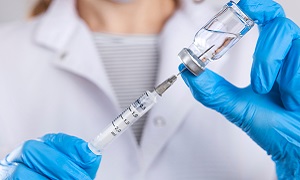Trigger Point Injection
Trigger point injection, an option for some patients, is used for treating painful areas of muscle containing trigger points. A trigger point is a focal area of spasm and inflammation in skeletal muscle. Trigger points in areas such as the upper back and behind the shoulder can lead to neck pain, shoulder pain or headache.
When muscles are unable to relax knots of muscle form around them. Such knots can be felt under the skin. Trigger points can cause irritation in the nerves around them and cause referred pain or pain felt in another body part.
Purpose
If your muscle pain doesn’t improve after other treatments, such as physical therapy and pain medication; then trigger point injection can be a choice of treatment for you. Trigger point injections are used for treating various conditions such as:
- Frequent tension headaches- Thousands of people suffer from tension headaches. Tension headaches are generally the most common form of headaches. Trigger point injections can help patients who go through greater-than-usual occurrences of tension headaches as they are generally caused by muscle tightness.
- Fibromyalgia- People who suffer from Fibromyalgia fight three major symptoms that prevent them from fro living a healthy and active life. These symptoms include chronic pain, fatigue and tenderness. Trigger point injections are able to reduce those symptoms.
- Myofascial Pain Syndrome- Though the causes of this syndrome are still not fully understood, we do know that this ailment leads to generalized muscle pain, tenderness and spasms. Trigger point injections are not able to cure the illness but they will certainly bring relief to patients who are enduring the symptoms.
Preparation
Procedure
Trigger point injections are usually administered by rheumatologists, physical medicine and rehabilitation doctors or pain management doctors. Sometimes, family doctors, general practitioners or neurologists may also administer it. Usually, the injection is administered in a doctor’s office with the patient either lying or sitting on the exam table.
The doctor inserts a small needle into the trigger point of the patient. It contains a local anesthetic or saline and can include a corticosteroid as well. The injection is able to make the trigger point inactive, which alleviates the pain. Injections usually take only a few minutes. Generally, in one visit, several sites are injected.
After treatment
Trigger point injections cause very little pain generally. Most patients are able to resume work right away.
Patients are encouraged to limit strenuous activity immediately following the procedure. However, you are free to resume your normal routine the next day. Usually, you will experience immediate pain relief.
In some rare cases, don’t be discouraged if the area where the injection was applied is sore. Sometimes you might also need to apply an ice pack for 15 minutes in an hour and combine it with over-the-counter medication until it subsides.
Avoid standing for long periods, lifting any heavy objects, jogging or running and also refrain from using heating pads.
Inform your doctor if:
- You’re experiencing difficulty in breathing
- You are not able to control bowel or bladder function
- You have a severe and persistent cough
- You are experiencing arm and leg weakness beyond the injection site
- You are experiencing chest pain
Results
Generally, a trigger point should resolve after just one injection. This is the case when one has an isolated trigger point, especially if the cause of the trigger point has been removed.
However, when it comes to trigger points caused by chronic conditions such as fibromyalgia and myofascial pain syndrome; trigger points can recur due to the underlying problem. In such cases, trigger point injections may need to be administered on a regular or as-needed basis.
The frequency of trigger point injections can also depend on the medication being injected. In cases, where only lidocaine or a mixture of anesthetics is injected, then these injections can be administered as ongoing therapy once or twice a month. In cases where a steroid medication is injected, trigger point injections need to be administered much less frequently due to the risk of tissue damage or shrinkage due to the steroid medication.


